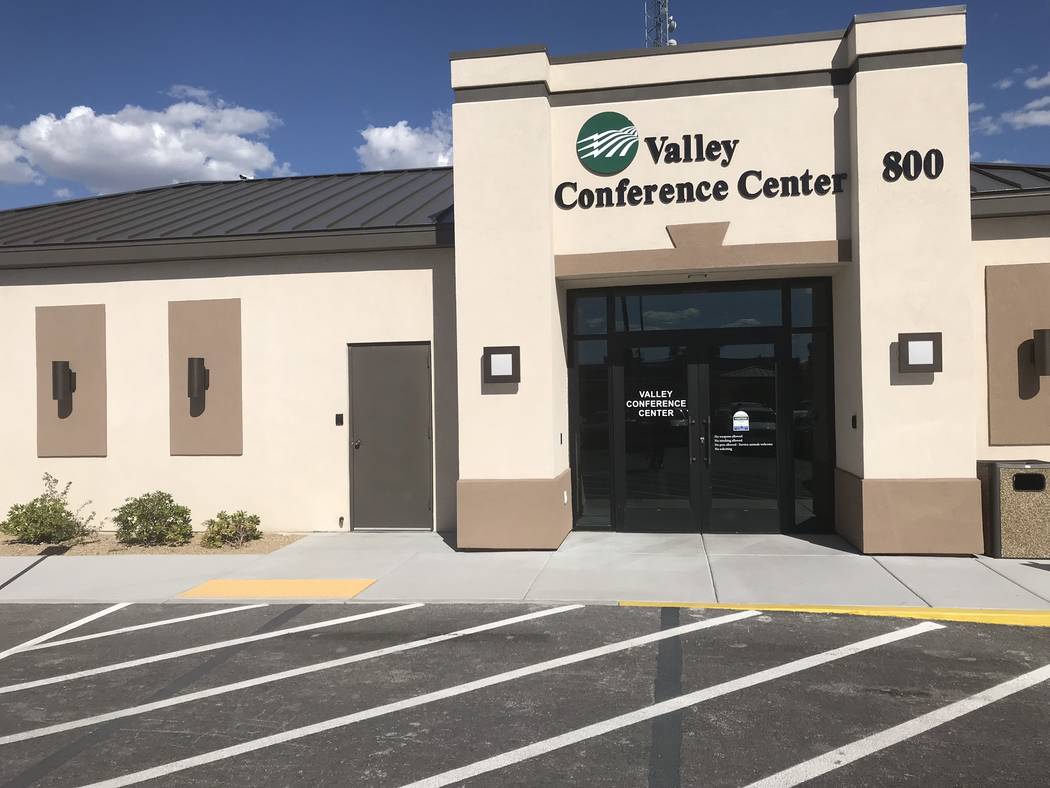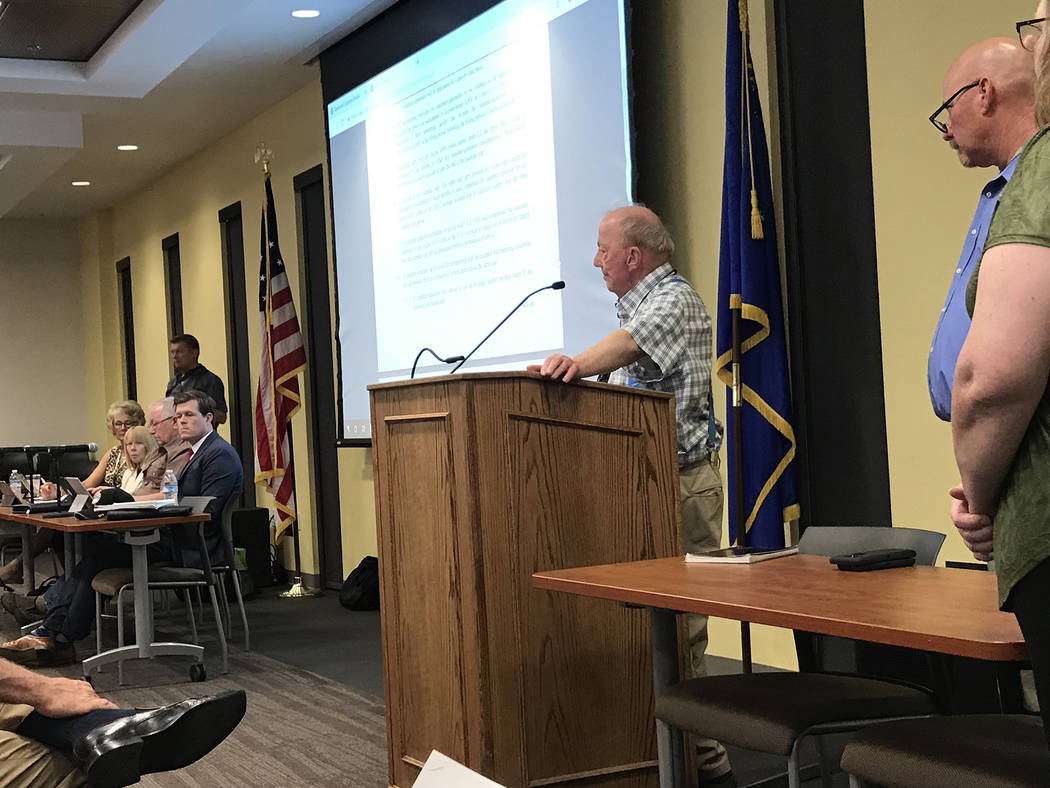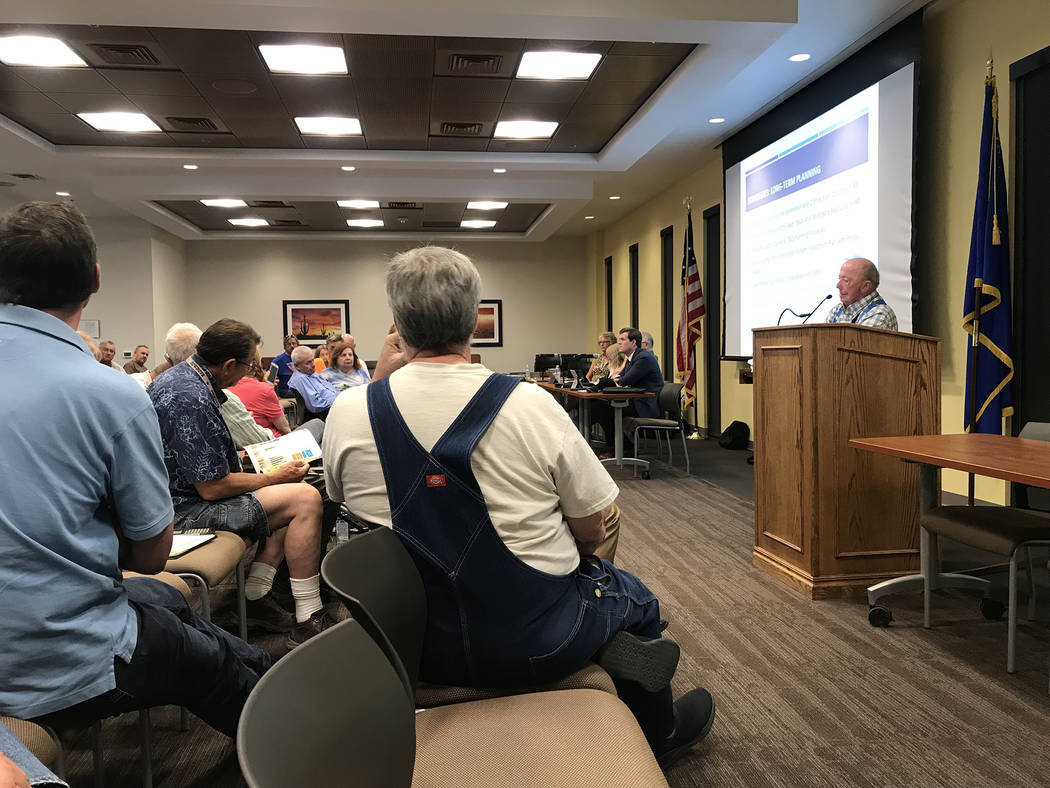Valley reverses move to push for creating tiered system for its net metering program
Valley Electric Association Inc.’s board reversed its position on plans to potentially institute a tiered system for co-op customers that have or plan to install rooftop solar or other renewable energy power-generation systems and utilize Valley’s net metering program.
During a town hall meeting on Aug. 5, Interim Valley Electric Association Chief Executive Dick Peck announced to dozens of Valley’s members owners that he wasn’t aware that a net metering policy was already in place prior to pushing for new changes. That policy, referred to by Peck as Policy Rule No. 20, was created in 2008.
The co-op’s board had been mulling over putting a new policy (Policy No. 136) in place prior to the town hall. That policy would have altered the co-op’s net metering policy, ultimately reducing the rate paid per kilowatt-hour, on a tiered system, for co-op customers who have rooftop solar and other renewable systems installed or are planning to install them—based on when a customer had interconnected to Valley’s grid.
The policy was pegged to reduce the current 100 percent retail rate and reduce it to between 75-95 percent, based on when customers interconnected with Valley’s grid. That policy was to mirror Nevada Assembly Bill 405, according to the co-op.
Nevada State Sen. Chris Brooks attended Valley’s June board meeting to speak about Assembly Bill 405 and offer suggestions to Valley’s board on changes going forward.
Valley Electric’s new policy committee, which plans to meet in August, will be looking at Policy 136.
“The net metering policy will be 136 after the policy committee goes through the issue and makes sure that everything in there that you as a member want in the policy,” Peck said during the town hall where members asked questions about potential changes. “As of right now, you’re going to be somewhere between where we’re at with Rule 20 and the new Policy 136. I don’t know exactly where it’s going to wind up. I can’t speak for the new committee, nor can I speak for the board.”
Peck also said during the meeting that “We have no plans to do anything other than have a 1:1 ratio…”
The motivation for the town hall meeting was to remove a cap from the net metering in place, according to Peck’s statements at the meeting.
“The motivation was, there was a cap on solar installations the board had in schedule 20,” Peck said in response to a question from a member-owner.
Peck explained that there is a 4 percent cap on solar installations, based on Valley’s load.
“We exceeded that, so literally what we’re doing here is removing the cap going forward under this existing Schedule 20 policy and to make sure that we, in fact, are doing the right thing and this is something that all members want, including the solar generators,” he said.
Kathleen Keyes, Valley’s District 4 (Fish Lake Valley) director, said she thought “people came in with different expectations than they left with” at the town hall meeting.
“I think they were put at ease that nothing’s going to happen tomorrow, nothing’s going to change on them,” Keyes said. “It’s all going to be the same, and they’ve been assured that they’re going to get some input into this policy going forward.”
Keyes attended the meeting along with Dave Dawson, Valley’s District 6 (north Pahrump) director, and Terrie D’ Antonio, director for Valley’s District 5 (Sandy Valley), who attended the meeting through video conferencing.
Dawson chairs the policy committee with D’Antonio, according to information on Valley’s website.
Peck said he was happy to see such a good turnout at the town hall.
“I am so pleased to see the turnout today from the membership,” he said. “I was pleasantly surprised. I’m so glad to see the owners are taking the responsibility and coming up with really good suggestions.”
Contact reporter Jeffrey Meehan at jmeehan@pvtimes.com. On Twitter: @pvtimes
At a glance
- Valley Electric Association, Inc. (VEA) is a member-owned nonprofit electric utility headquartered in Pahrump.
- While VEA started as a small rural electric utility in 1965, the company now provides electric service to more than 45,000 people within a vast 6,800-square-mile service area located primarily along the California-Nevada line, with the majority in Nevada.
- Valley Communications Association (VCA), a wholly-owned subsidiary of VEA, began providing high-speed communications to our member-owners in the spring of 2016.
- VEA's service area starts in Sandy Valley, southwest of Las Vegas, and extends north for more than 250 miles to Fish Lake Valley. For more information about VEA, visit www.vea.coop
Source: Valley Electric Association



















